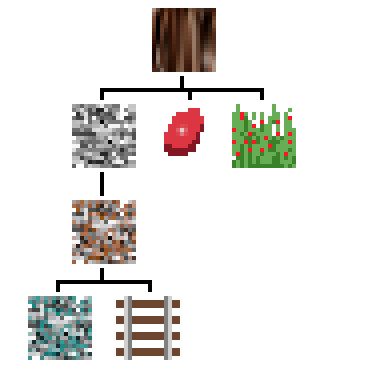Ramping in games is the rate at which the difficulty level changes throughout a game. In some cases, ramping can also refer to the level of engagement in the plot. Both kinds of ramping make the game more fun if the progression has variation as opposed to a steady line. At the same time, if the line jumps too quickly, average gamers see the game as too hard, hardcore, or broken. It would be appealing only to hardcore gamers, who are willing to “grind.” Grinding is doing low-level tasks while avoiding dangerous situations until grinding provides powerful enough character attributes or gear.
If every level is available at every time, you are not playing a game but a simulator. An experience created using the Minetest engine does not have to be a pure simulator. Pure simulators are only for training or illustration, after all. You don’t need to spend hours in a simulator to become a miner, nor does building with decor blocks prepare you to do someone’s plumbing (though it could be used to illustrate plumbing or other concepts in an educational context). Therefore, sandbox games that are pure simulators are not useful for general audiences, nor as standalone tools unless very realistic. Certain sandbox games may be building games only, but they do not have lasting appeal. Eventually, most people move on to a game that has ramping, or on to a design tool.
Minetest is useful as a standalone pure simulator such as a museum (a museum with near-infinite scalability that can contain the wonders of the world as Bucket City does). However, ramping would need to be present to encourage the person creating the builds to maintain effort over time and complete significant builds in the first place. That is how you engage general audiences, instead of just the rare builder who neither moves on to design tools nor is interested in challenges other than design challenges. A simulator has reasons to exist, such as for teaching and building. However, Minetest provides opportunities to be a “game” (or include games). Not everything called a game is really a game.
The tech tree is a way to add ramping. The tech tree is the tree-like progression of what you make based on which materials you have mined. A tech tree with breakthroughs is more fun than a steady progression and is an example of how uneven ramping is more fun. A sandbox game can have breakthroughs (Bucket Game has some, and I plan to contribute more code in that area–see its Player’s Guide).

Combat ramping may not seem possible in a sandbox game without heavy curation. In the case of Minetest, curation to that end would usually require addition or removal of many existing mods (as the number of mods available is high), and moderate recoding. However, there are at least two areas where combat ramping is possible without such a level of curation: exploration (especially vertical exploration) and technology.
Horizontal exploration is not a significant source for ramping in a random sandbox game. The sandbox aspect takes away any linearity that can be accomplished in other random games (since walls are breakable). NSSM (The Minetest Not So Simple Mobs mod, which is not in Bucket Game) tries to implement ramping horizontally. Since the terrain is completely random in Minetest (other than scant structures), the ramping is not discoverable (except by many unexpected deaths in completely unbalanced battles). Players must already know which mobs to avoid and seek out. The balance comes by grinding and self-direction, but NSSM offers only the most extreme level of challenge in comparison to other games, so it doesn’t attract a broad audience. Bucket Game or other games can use the mobs mod’s min_height and max_height to provide vertical difficulty ramping, along with spawn_nodes and spawn_by to provide horizontal variation. spawn_nodes is a list of “or” values. You can limit the spawning by providing both spawn_nodes and spawn_by lists (so chance is only calculated against the set of unused/air nodes where a node from spawn_nodes is underneath, and a node from spawn_by is to the side).
Minetest mods can make some progress in the area of horizontal ramping by only spawning difficult monsters in premade areas. There could be dungeons made of unique nodes that drop (harvest as) regular nodes with the same visible look (but the regular nodes would not spawn the harder enemies). Volcanoes or other formations that are visually foreboding (as an intuitive warning) could also be a place to spawn unique enemies. Since the number of nodes would be so low and localized, the chance of spawning could be very high. In the case of Minetest, the chance value for the mob must be low to have a high chance (since confusingly, the chance variable, sometimes more correctly called rarity, is a chance denominator).
Even regular materials used for dungeons can provide a means of both vertical ramping (along with min_height and max_height in the mobdef of harder mobs) and horizontal variation. Even though players may make homes using “natural” materials (cave materials such as default:stone and dungeon materials such as default:sandstonebrick), they are usable for spawning hard monsters, since players must always light their homes to prevent enemies. Expecting them to do so is an example of making a gameplay choice.
Balancing could be considered a work in progress for any game with a large number of enemy characters. However, leaps in progress were possible in Bucket Game by making gameplay choices, choosing a mob framework, integrating mobs with each other, officially supporting some forms of technology, and accounting for material rarity in mob and tech tree design.
Related article:
